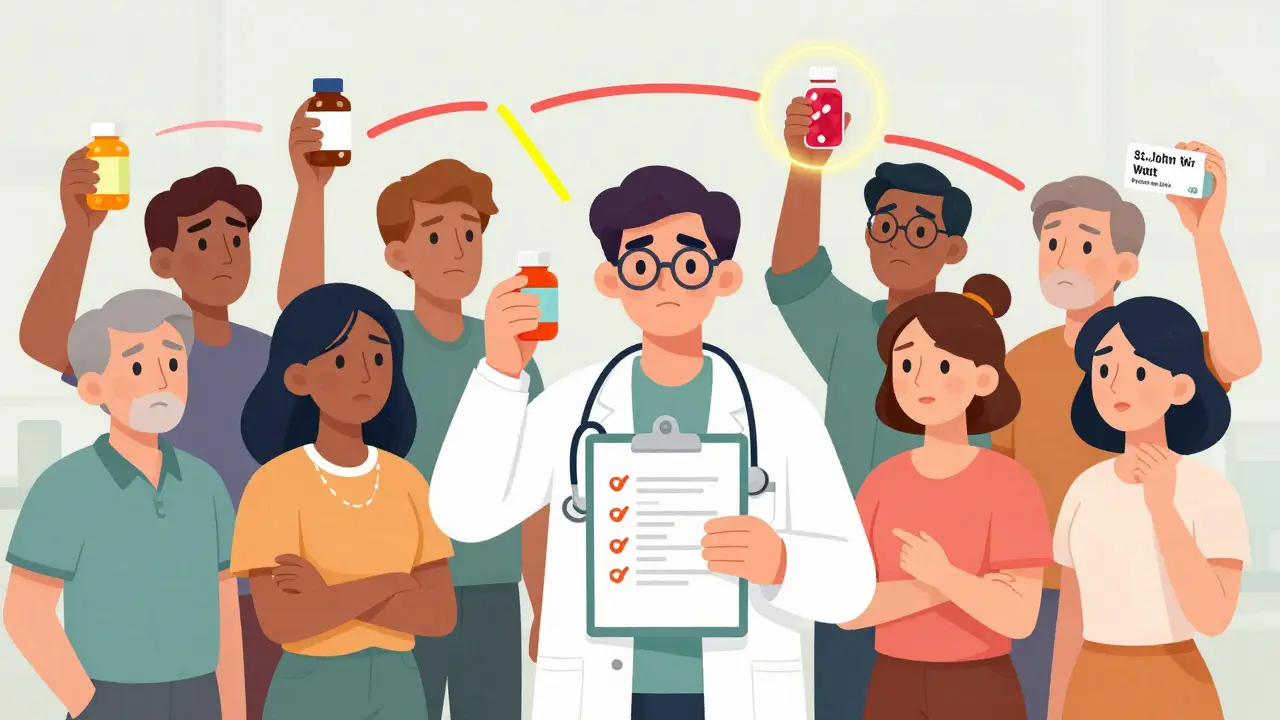Ever taken two pills and wondered if they’re playing nice together? You’re not alone. A drug interaction happens when one medicine changes how another works. It can boost side effects, make a drug less effective, or even cause a dangerous reaction. Knowing the basics helps you avoid surprises at the pharmacy.
Most people think only “big” drugs cause trouble, but even over‑the‑counter vitamins can mix badly with prescription meds. For example, aspirin can thin your blood while a blood‑pressure pill might raise it, leading to unpredictable bleeding. Another common combo is an antibiotic with dairy – the calcium can stop the antibiotic from being absorbed, so you miss the cure.
These mismatches aren’t just inconvenient; they can land you in the ER. A simple headache med combined with an antidepressant can cause a spike in serotonin, leading to a condition called serotonin syndrome. That’s why checking interactions is a habit worth forming.
1. Ask the pharmacist. They have a quick reference guide and can flag obvious conflicts. 2. Use a free online checker. Type in every drug, supplement, and herb you take; the tool will highlight red flags. 3. Read the label. Look for warnings like “do not take with grapefruit” or “avoid alcohol.” 4. Keep a list. Write down name, dose, and timing for each medication. Show it to any new doctor or dentist.
Even if you’re feeling fine, an interaction can lurk under the surface. That’s why it’s smarter to double‑check before you start a new supplement or change dosing.
Some interactions are predictable. Blood thinners (warfarin) and vitamin K‑rich foods (spinach, kale) can cancel each other out, making clotting harder to control. On the flip side, taking a cholesterol drug called statin with certain antibiotics can increase the risk of muscle pain.
If you notice any new symptom – dizziness, rash, unusual bruising – treat it as a possible interaction signal. Call your doctor, describe what you’ve taken recently, and ask if the symptoms could be linked.
Remember, the goal isn’t to scare you but to give you tools. A quick chat with your pharmacist or a glance at an app can save you from a night in the hospital. Keep your medication schedule organized, stay curious about what you’re putting in your body, and you’ll stay ahead of most drug‑interaction problems.
Got a specific question about a combo you’re using? Drop a comment or message us – we love helping you stay safe on your health journey.

Pharmacogenomics reveals how your genes affect how your body processes drugs, reducing dangerous interactions. Learn how genetic variants like CYP2D6 and TPMT impact medication safety - and what you can do now.
read more
Sharing a complete medication list with every healthcare provider can prevent dangerous drug interactions. Learn what to include, how to update it, and how to make sure your providers actually use it.
read more
Erythromycin is a widely used antibiotic known for treating various bacterial infections. This article breaks down what erythromycin is, how it works, its uses, possible side effects, and tips for safe use. You'll also find details on how it compares to other antibiotics, common drug interactions, and best practices for taking it. Whether you're new to the medication or just curious about antibiotics, this guide covers the facts you need to know.
read more